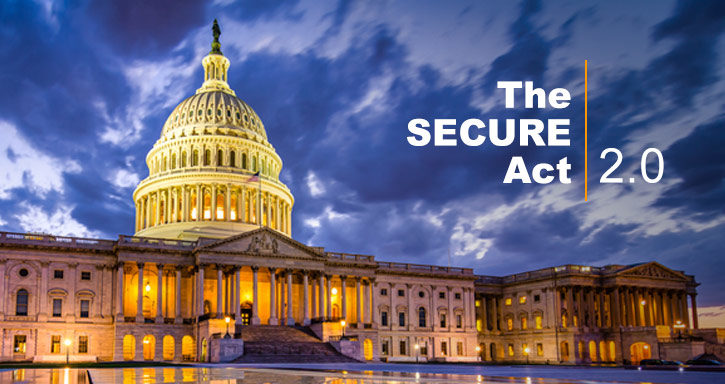
Kaaren Hall, CEO, uDirect IRA Services
What’s new in 2022 for your IRA? We may see a resurgence of some of the proposals considered in the Build Back Better Act. For now the most likely changes to retirement savings will come in the form of the Secure Act 2.0.
The Secure Act 2.0 passed the House Ways and Means Committee by unanimous vote in May, 2021 before it was stalled. Bipartisan legislation aimed at helping Americans build their retirement savings has better prospects in 2022, according to many in the financial-services industry.
THE PROPOSED LEGISLATION INCLUDES:
- Increases the required 401(k) minimum distribution age from 72 to 73 starting in 2022, 74 starting in 2029, and 75 starting in 2032.
- Creates a new credit to encourage small employers to make employer contributions ($1,000 per employee).
- Expands automatic enrollment by requiring new defined contribution plans to implement automatic enrollment.
- Increases the required minimum distribution age from 72 to 73 starting in 2022, 74 starting in 2029, and 75 starting in 2032.
- Increases the annual catch-up limit from $6,500 to $10,000 for ages 62 to 64.
- Subjects all catch up contributions to Roth tax treatment.
- Permits employees to elect Roth tax treatment for matching contributions to retirement savings.
- Permits matching contributions based on employees’ student loan repayments.
- Allows 403(b) plans to utilize collective investment trusts.
RMD EXEMPTION FOR IN-PLAN ROTH AMOUNTS:
The RMD rules (Required Minimum Distribution) generally require plan participants and IRA owners to begin taking distributions shortly after the participant or IRA owner reaches age 72 (subject to certain exceptions). Although similar RMD rules apply to IRAs, Roth IRAs are exempt from the pre-death RMD rules. This generally means that individuals are not required to begin taking distributions from their Roth IRAs at age 72.
The Secure Act 2.0 could extend the pre-death RMD exemption for Roth IRAs to in-plan Roth amounts. Under current law, a participant with Roth amounts in his or her plan may generally avoid the pre-death RMD rules by rolling plan assets into a Roth IRA. Extending the exemption from the pre-death RMD rules to Roth amounts in plans would mean that participants would not have to roll over plan assets from a plan designated Roth account to a Roth IRA just to avoid being required to begin taking distributions of Roth amounts at age 72.
uDirect IRA Services will continue to follow the progress of these Secure Act 2.0 proposals and will update you here on this Blog. Please reach out to us with any questions regarding Self-Directed IRAs at info@uDirectIRA.com.






